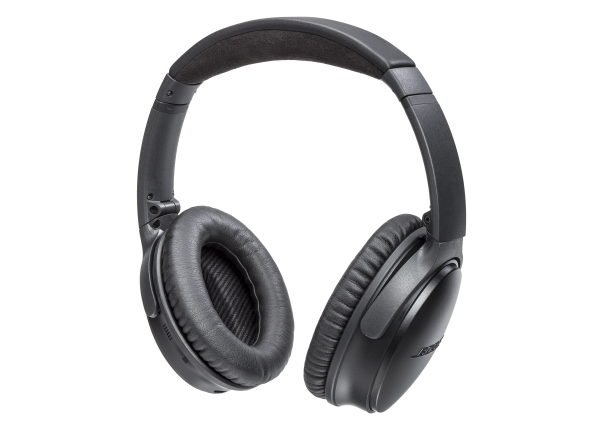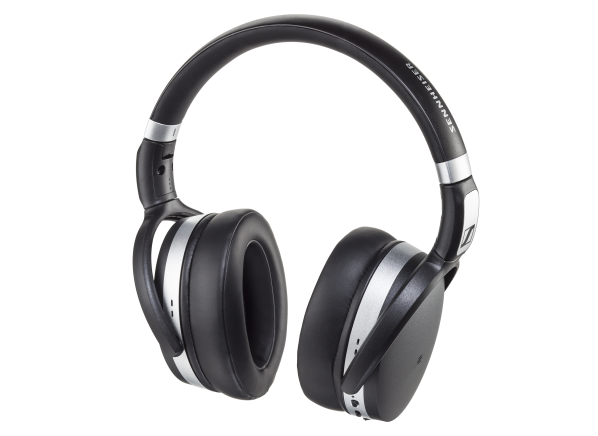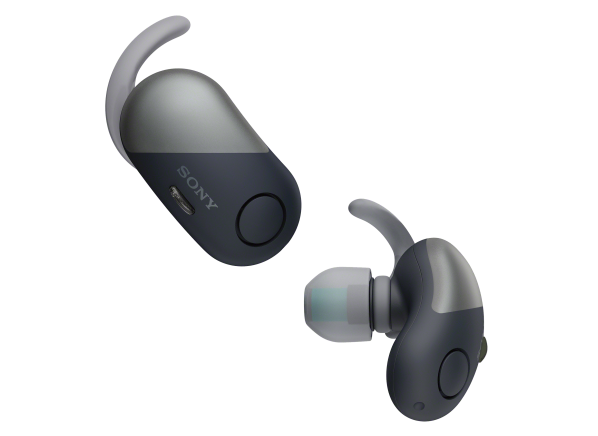Squeaks, hums, rattles, beeps, chirps, chimes, whines, thumps, bangs—all sorts of noises come from the devices and machines in our homes, and they are more than merely annoying. Over the long term, they can have a deep impact on you in ways that are not always obvious.
Public health experts have long warned about hearing damage from prolonged environmental exposure to noise levels at or above 85 decibels (dBA), which can come from everything from construction equipment to barking dogs. But experts are also seeing evidence of physiological and psychological consequences from noise exposure far below that threshold.
"From about 40 decibels—a little louder than a quiet office—we start to see mood disruption," says Erica Walker, an environmental health researcher and the director of the Community Noise Lab at the Boston University School of Public Health. "And as we move to 65 decibels and above, we see hypertension, increased secretion of stress hormones, thickening of the blood, and cardiovascular mortality."
We may be even more susceptible to noise when we're asleep. Lab and field studies conducted by researchers from the Institute of Aerospace Medicine at the German Aerospace Center showed that sound-pressure levels just above 33 decibels—what you'd experience 4 feet away from a CR-recommended air purifier set on low—can disrupt sleep cycles, which can lead to impaired mental abilities and, potentially, other health woes.
There might not be much you can do about the noise you experience in the world outside, but inside your home, you get to control the volume. It's the place where you can make decisions about the products you own—in some cases there are big differences in how noisy they are—and how you use them.
"Your home should be a sanctuary," says Maria Rerecich, Consumer Reports' senior director for product testing. "We know that the way products sound can be deeply important to the consumer experience. That's why we test for noise in 24 categories."
Podcast: Product Noise Testing and Design
Rerecich points out that many appliances these days handle their basic functionality pretty well—almost all the dishwashers in our ratings, for instance, score a Very Good or an Excellent for washing performance. In that type of product category, noise can be the characteristic that shapes your feelings about the machine you're going to live with every day. "If you don't spend a little time considering the noise profile of a product before you buy it, you might wind up spending a lot of time considering it after you buy it," she says.
What It Means to Measure Noise
Noise is at once basic and devilishly complex. By definition, noise is simply unwanted sound. But to the community of experts who attempt to measure it, control it, and hunt it down in the products we use every day, noise can be a problem that requires extraordinary engineering diligence, sophisticated instruments, and, occasionally, a bit of imagination.
John Galeotafiore, the engineer who oversees Consumer Reports' testing of outdoor power equipment, has spent a considerable amount of time rigging up sound meters in interesting ways to simulate the position of the human ear. "We clip a microphone to a baseball cap when we're testing lawn mowers," he says. "That's important because it captures what the consumer will experience in their own backyard."
These meters measure "sound pressure" level (that is, the difference in pressure between a sound wave and the ambient air pressure, expressed in decibels), which is relative to where you're standing. So we often place our sound meters at multiple distances from products during noise testing. The meter measuring 3 feet from a leaf blower will tell us whether you need to wear ear protection, and the same meter 50 feet away will tell us what your neighbor might hear if you decide to tend to your leaves early on a Saturday morning.
But other factors contribute to the perception of noise. Like music, most sound isn't monotone—it typically comprises many frequencies at varying levels. Experts often define sound quality using terms such as "pitch," "loudness," "softness," "sharpness," "roughness," and "tonality."
All these qualities together influence how we react to different sounds. Certain sounds make us feel relaxed. Others—particularly high-frequency sounds or loud, low-frequency "thumping" sounds—annoy us and can trigger stress-producing hormones. "A sound's decibel level or the sound volume doesn't give you the whole story," says Jim Nanni, the engineer who oversees Consumer Reports' testing of large appliances. "You could have a refrigerator that runs very quietly but generates an off-putting sound when the compressor starts up. A sound-level meter alone won't tell us that."
Ever wondered how how your countertop devices got their sounds? CR asked David Davenport, design direction lead of Breville, to describe how he creates the beeps your appliances make.
Click here for an audio quiz.
To assess sound quality, CR uses experienced sound judges who sit for hours listening to complete cycles of appliances such as dishwashers and washing machines. We also dispatch experts to the homes of CR members to see how they live with products and which factors are important to them. We've found that some folks enjoy the way the sound of their window air conditioner lulls them to sleep, and others wake up every time the compressor kicks on.
Appliance manufacturers know how noise can influence consumer reactions to their products. And many companies have spent decades testing and refining their products to hush the din out of them. Sometimes noise becomes an engineering balancing act, where product performance needs to be weighed against the consumer sensory experience. Other times it's a sonic mystery that requires a little detective work.
The Case of the Hissing Compressor
Gabriella Cerrato is a sound sleuth. She works as an engineer for Brüel & Kjær, a major sound- and vibration-measurement company founded in the 1940s by a pair of Danish scientists—Per Vilhelm Brüel and Viggo Kjær, pioneers in the discipline of sound measurement. Brüel & Kjær is one of the world's largest producers of sound-measuring equipment; it also does consultations with manufacturers.
Cerrato, a theoretical physicist by training, spends much of her job tracking down noise in consumer products, then finding creative ways to control, baffle, attenuate, mask, redirect, or otherwise manipulate it.
In 2001, prior to her starting at Brüel & Kjær, a major appliance maker called on Cerrato for help with one of its refrigerators. Like others on the market, it had a compressor that was much quieter than that of previous generations. It was so quiet, in fact, that consumers began complaining about a subtler noise.
A noise doesn't have to be loud to be annoying. "I can play Metallica and Beethoven at the same amplitude, but they sound completely different," Cerrato says.
Want to diminish the din in your own home? Follow these tips to quiet down your appliances and gadgets.
Cerrato began her investigation by taking sound recordings of the appliance in a semianechoic chamber—a room with its walls and ceiling covered in sound-absorbing foam wedges—which allowed her to isolate the refrigerator's various knocks, rumbles, hisses, and squeaks. When reviewing the graph plotting sound frequency, Cerrato and her team of engineers spotted a clue in the color-coded chart: a narrow band around 2,350 Hz—just the sort of high-pitched tone that can get under your skin.
But she still needed to find the "source of excitation," she says. So she attached accelerometers to various parts, and as the refrigerator worked through its cycles, she was able to pinpoint the compressor's discharge system as the cause of the problem. Working with the compressor manufacturer, Cerrato and her team recommended a redesign of two components in the discharge muffler, the part meant to reduce noise and vibration in the compressor discharge line, and the offending noise was no longer noticeable.
In the end, the improved refrigerator was no quieter, but it sounded better. "Decibels had nothing to do with this issue," Cerrato says. "This was about pure sound quality."
The Human Factor
When it comes to assessing noise, sometimes the most effective testing equipment is the human ear—or better yet, a bunch of them. The raw data from a sound meter can tell you a lot about how loud or quiet a machine is from a specific distance, but it doesn't experience the sound in a way that puts it into context for consumers.
Dishwasher manufacturers, for instance, may publish a low decibel rating to support a claim about the quietness of a model. The figure might be accurate as an average, but by combining the readings from a long, silent drying cycle with noisy spikes from the machine filling with water and draining, the data can misrepresent the noisiness of the machine.
"I can blast an F-16 fighter jet engine for a few seconds and then shut it off and let it sit until the time-weighted average decibel level equals a 40-dBA dishwasher," says Larry Ciufo, the Consumer Reports test engineer who oversees the dishwasher lab. "But what you'll remember is the noise that engine blasted for those few seconds."
To better reflect the consumer experience with dishwashers, Ciufo uses CR's sound judges, who sit through the entire cycle of every model we test, making assessments. They'll even listen to the cycle of a reference model we keep in the lab to recalibrate. "We listen to the water splashing, soap dispensers opening, solenoids clicking," Ciufo says. "We listen to everything—except the drying."
Like most major appliances, dishwashers have gotten quieter over the past few decades—partially in reaction to consumer feedback. In 1996, Germany's Bosch Home Appliances conducted a consumer-research study that found the No. 1 complaint among dishwasher owners was noise. Bosch re-engineered its dishwashers, adding layers of acoustic insulation, reinforcing the base to reduce vibrations, and replacing the built-in food grinder with a filter that has to be removed and rinsed if it gets clogged. That decreased convenience but also reduced noise.
Before you fire up your gas-powered outdoor equipment, read CR's advice on how to protect your hearing when using a snow blower.
Two decades ago, all the dishwashers Consumer Reports tested were self-cleaning. Today, more than 90 percent have manual filters, and they're relatively quiet. There are still loud dishwashers, but now consumers have much more of a choice, and you don't necessarily have to pay a premium to get a quiet one.
When manufacturers need to better understand issues of sound quality with their products, they use listening panels made up of ordinary consumers. David Bowen, director of the Noise & Vibration Group at Acentech, an acoustical and vibration consulting firm based in Cambridge, Mass., often empanels such groups to help companies troubleshoot noise problems or to simply guide them toward designing more acoustically pleasing products. Like Cerrato at Brüel & Kjær, Bowen is a bit of a sound detective, and he has worked on everything from electric toothbrushes to motorized window shades—he has even helped a golf brand fine-tune the sound of its titanium driver hitting a golf ball.
Bowen's panels listen to sounds played over loudspeakers and respond with numerical values. "We bring in people and get quantitative answers to subjective attributes, like ‘acceptability,' as in ‘how acceptable is this particular sound coming from this particular product,' " Bowen says. The panelists are asked to rate the sounds based on their subjective impressions of various attributes having to do with characteristics of the product itself, and Bowen uses the results to build data maps of customer perception.
In 2004, Bowen turned to such a panel for a project to optimize the sound quality of a vacuum cleaner, polling the group's members on the acceptability of isolated sounds the machine made. With the help of his panel, Bowen concluded that the high-pitched squeal of a cooling fan annoyed users and that the lower-frequency rumblings emanating from a belt-driven cleaning head gave them a reassuring sense of power. The solution? They kept the rumble and changed the geometry of the fan housing to reduce the squeal.
In the end, the one thing Bowen's panels and even the most sophisticated instruments can't predict is the effect his work will have on a product's fortunes in the marketplace. "I don't know if our change improved sales," he says, "but operating the machine was better."
Best Noise-Canceling Headphones
Looking to combat some of the noise in your own life?
These CR-recommended headphones can quiet the world around you by generating sound waves meant to neutralize external noise—and they can make your music sound great, too.
Editor's Note: This article also appeared in the February 2019 issue of Consumer Reports magazine.
Which Products Are Damaging Your Hearing?
Some outdoor yard equipment is so noisy it can damage your hearing within 15 minutes. On the "Consumer 101" TV show, Consumer Reports' expert Eric Hagerman explains how CR tests to find out how loud—and dangerous—these products can be to your hearing.




















